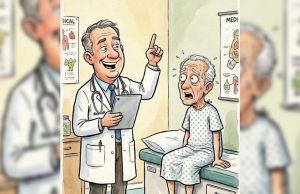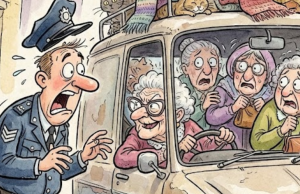
Visible veins—especially on your hands, arms, or legs—are often considered as a harmless sign of aging, low body fat, or physical activity. But in some cases, suddenly visible veins can signal underlying health problems that shouldn’t be neglected. Below are five conditions that could be behind those bulging, noticeable veins.
1. Chronic Venous Insufficiency (CVI)
Chronic venous insufficiency happens when the valves inside your veins weaken or fail, preventing bl00d from flowing efficiently back to the heart. As a result, bl00d pools in the limbs—especially in the legs—and veins can appear enlarged, twisted, or bulging.
Symptoms include:
- Visible, rope-like veins
- Swelling, heaviness, or aching in the legs
- Discoloration or ulcers near the ankles
CVI is more popular in older adults and people who stand or sit for long periods. Left untreated, it can cause serious complications like leg ulcers or blood clots.
2. Varicose Veins

Varicose veins are a popular vein disorder that can cause veins—particularly in the legs and sometimes in the arms—to become visibly swollen and twisted. While often considered a cosmetic issue, they may also signal underlying vein dysfunction.
You may spot:
- Dark blue or purple veins that are raised or bulging
- Burning, itching, or throbbing around the veins
- Cramping or fatigue in the affected limb
- Risk factors include genetics, pregnancy, obesity, and long hours of standing.
3. Deep Vein Thrombosis (DVT)
DVT is a serious condition where a bl00d clot forms in a deep vein, typically in the leg or thigh. Though the clot is not always visible, some cases may lead to prominent or bulging surface veins because of blocked blood flow.
Warning signs include:
- Sudden swelling in one leg
- Pain or tenderness, often starting in the calf
- Skin that’s red or warm to the touch
DVT is potentially life-threatening because a clot can travel to the lungs (pulmonary embolism). Immediate medical attention is required.
4. Congestive Heart Failure (CHF)

When the heart can’t pump blood effectively, pressure builds up in the veins, leading to swelling and visible veins—especially in the neck, hands, or lower extremities.
Other signs include:
- Shortness of breath
- Fatigue and weakness
- Swelling in the legs, ankles, or feet
CHF is a chronic condition that needs ongoing medical care. If you have visible veins and symptoms of heart failure, meet your doctor promptly.
5. Peripheral Vascular Disease (PVD)
PVD is a condition in which narrowed blood vessels reduce blood flow to the limbs. While arteries are primarily affected, changes in venous circulation can also cause visible veins as the body compensates by rerouting blood through smaller vessels.
Possible symptoms:
- Tired, aching legs
- Numbness or coldness in extremities
- Slow-healing wounds or color changes in the skin
PVD is often connected to atherosclerosis and may increase the risk of heart att.ack or stroke.
When to See a Doctor

While visible veins are often harmless—especially if they’ve developed slowly over time—sudden changes in appearance, pain, or swelling should not be neglected. If you spot:
- One limb suddenly becoming more veiny than the other
- Painful or throbbing veins
- Skin discoloration or wounds that don’t heal
…it’s best to visit a healthcare professional. Early detection of vascular issues can prevent more serious complications down the road.
Final Thought:
Your veins do more than carry blood—they can carry important war.ning signs. Draw attention to what your body is trying to say. Veins that suddenly become visible might just be your body’s way of asking for help.



















